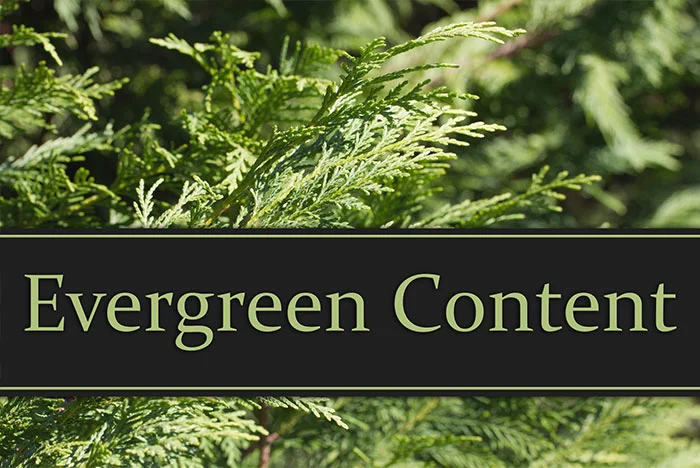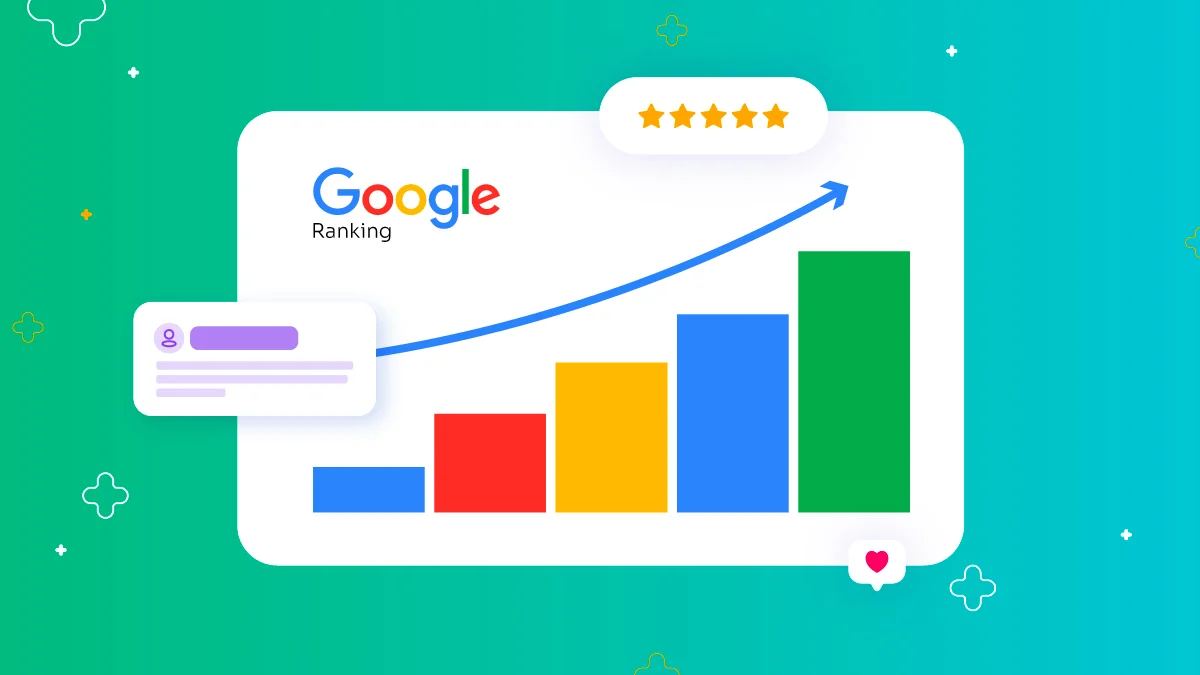How to Write Evergreen Blog Content That Will Rank on Google
You may have noticed when searching the Internet that a series of blogs and sites are often among the first five results of the search pages. These sites have very high natural traffic, and the number of visitors to their content is perhaps a thousand times more than the content you write on your blog or site. Do you know what the secret of their success is?
These sites use “evergreen content” as a marketing strategy. If you are hearing this term for the first time or if you have heard it before and are curious to know more about it, stay with us until the end of the article.
This article is a guide for beginners, and we do not intend to use specialized or vague words in it. So, whatever level you are at, you will probably fully understand its concepts.
Definition of evergreen content in very simple language
Evergreen content refers to articles and content whose subject matter is always relevant, does not become stale over time, and continues to drive search traffic to a website long after it has been published. This type of content is search-optimized and always fresh for readers.
Here, we must mention the important difference between evergreen content and normal content. Evergreen content does not mean content that stays on the Internet forever because all online content stays on the Internet forever, and nothing is removed from the blog or site until the publisher himself has deleted the content. The difference between them is that evergreen content continues to have an audience long after its publication, and its search traffic increases over time. But normal content will not have readers after a while, and no one will visit it.
Why is it called Evergreen content?
As the name suggests, evergreen content is sustainable and has no expiration date. This term is derived from the name of pine or cypress trees, which are symbols of immortality and have green leaves in all seasons of the year. Even people who do not deal with marketing can easily understand the features of this content by hearing this name.

Why is Evergreen content important?
The goal of all business owners, marketers, and producers is to have their blog or website more visible, attract more traffic, and generally be popular. To achieve this goal, it is necessary to use lasting content that does not get old over time.
With evergreen content:
- More search traffic will be directed to your website.
- Bloggers or businesses related to your business may link to your article, and in this way, your page will be visited more.
- By optimizing your content for search engines (SEO), your site will rank well on search pages.
In what formats is evergreen content usually written?
Content written in one of the following forms can be evergreen:
Content that presents a topic in the form of a list;
Contents that express points about a topic;
Content whose title begins with the word “how” or “how”;
Content that reviews a product;
Content is prepared in the form of some types of videos or infographics.
Of course, this does not mean that if you write the content in such formats, you will automatically have evergreen content, but it means that these formats will help you more than other models in preparing lasting content. For example, a video titled “How to change our car tire?” that contains useful information is much more durable than a video whose content is a comedy skit.
What topics are suitable for writing this type of content?
The topics that are used to write evergreen content are the topics that always have readers, and their search volume is high on the Internet. Consider the following examples:
- The Complete Guide to Social Media Marketing: This content is invaluable for beginners looking to launch social media campaigns.
- How to take care of a new puppy: Although there is an abundance of content about animals on the Internet, such content is always useful and interesting for people who have just acquired a new pet.
- 10 ways to enjoy hot chocolate: A blog with content like this, especially in the cold months, can attract traffic from Internet users.
- How to lose weight: No matter what era we live in now, this year or 100 years from now, there will always be people looking for articles on how to lose weight.
Some or none of these topics may be relevant to your business. Don’t worry; these are just examples of the millions of different topics to write evergreen content for. You need to create content that creates value for your specific audience. The hardest part of writing this type of content is that usually, the most popular topics for any business have been written about, perhaps hundreds of thousands of times. So you either need to produce unique content or look for long-tail keywords that have significant traffic but are not very competitive. You need to make your content more valuable and rank higher in search engine results.
Very important point: Remember that you need to spend more time producing this content in order to have high-quality and valuable content in terms of SEO. If you want your website to rank higher in search engine results, you need to provide a positive user experience to your audience. Content should be attractive and valuable to users.

Which content cannot be considered evergreen?
To understand more precisely what evergreen content is, let’s see what content is not evergreen.
- news articles;
- Statistics or reports that quickly expire;
- Articles based on popular culture or about a passing trend;
- Articles were written about fashion.
- Articles about this year’s presidential elections and the like.
These contents may be popular for a short period of time when they are written, but they are ephemeral, and after their period is over, no one will go to them anymore. Therefore, these contents are not always considered green.
Now let’s see how to write evergreen content.
How to write an Evergreen article or blog post?
To write evergreen content, follow the steps and tips below:
Step 1: Find the right topics
In the previous two sections, we talked about appropriate and inappropriate topics for evergreen content. First, check whether your chosen topic matches the mentioned criteria. If the answer is yes, you’ve found a popular topic about your business (we don’t know if it’s evergreen yet). The next step is to research the relevant keywords.
Choose keywords with high search volume.
Even if you write the best evergreen content, it won’t be worth anything if people don’t type it into search engines. Therefore, it is very important to find the right keywords for the topic you choose. For this, be sure to practice keyword research methods well. There are some free tools that can help you with this.
Check the chosen topic that matches the keywords.
Now you have to decide whether the theme is evergreen. Sometimes, the search volume of the keyword you found may be high, but the topic you have chosen is not always green. In such a situation, this topic was probably temporary despite being popular. For example, seasonal topics are topics that have a high volume of keyword searches, but the topic of content is temporarily popular.
You can use the Google Trends tool to determine whether a topic is temporary. This tool will help you figure out if the topic you want to write about is a trending topic or something people are always searching for. For example, “Valentine’s gift” is a very popular keyword, and the topic is very popular, but any content written based on it is only specific to that year. Every year, new gifts with new features come into vogue, so your content will not get visitors for years to come.
Do not use competitive keywords.
Usually, each topic has specific keywords that everyone uses, and this is the reason why they are competitive. Use long-tail keywords or questions that users are searching for to write evergreen content. One useful tool for this is Answer the Public. Enter the topic into this tool and see what words people search for it. Take the term “social networking,” for example. When you click the “Get Question” button, all user questions about this topic will appear.
Another important tool is Google itself. Use Google suggestions. Type the keyword of the topic you are interested in on Google and see what questions people have searched about this topic, or what phrases they are looking for this topic.
Search engines can more easily direct visitors to your page if you find the right keywords and write your content using them. In this way, your website will be more visible and you will find a better position in Google or other search engines.
Let’s examine an example:
Let’s say your website is about social media. In this case, writing content with a key phrase like “social media” will be very competitive. Why not use the long tail keywords below instead?
- The best social media;
- social media and marketing;
- What is social media?
Content with these keywords can be smarter because they will have fewer competitors.

Step 2: Write evergreen content
Writing this type of content is not difficult. It is enough to prepare a useful article that will keep its value over time and will always have visitors. Keeping content green in the eyes of search engines like Google means that your content will show up as the top result on the search page today, tomorrow, and even months from now. Follow the steps below to write such content:
Write 10 times more content.
Google’s job is to show the best result according to what the user searched for. In order for your content to get the best possible results, you need to provide quality content that is the best of all the content that has been written on that topic. We call this content 10 times content.
If your content is the same as everyone else’s, you will have a lot of competition. If it’s slightly better than the rest, it could last anywhere from a few weeks to a few months, depending on your keyword type. But if you’ve written 10 times as much content, chances are your site’s rank will be maintained for a very long time.
To check whether the content you have written is 10 times the content or not, answer the following questions:
Quality check:
- Can the audience easily read and understand the content?
- Is it interesting, entertaining, or useful enough?
- Does it really solve a problem?
- Is your website well-designed?
Check for uniqueness:
- Is the article you wrote complete and comprehensive?
- Have you spent enough time on it?
- Have you answered all the questions? Are you confident that your audience will not have to refer to other sources for more information?
Are you an expert in this field or this particular part of the market? Do you have expertise in these subjects?
Avoid linking ephemeral topics to your content.
Many marketers like to use popular culture and things that have been popular among people for a while in their content. For example, for a long time, we saw articles whose authors used references to the popular series “Game of Thrones” in the title and images in the article. Note that an article has already been written about this:
“Lessons Jon Snow Teaches Us About Content Marketing”.
Here, the topic of content is evergreen, but not the content itself. The reason is that after some time, the fever of the “Game of Thrones” series disappeared, and this content was also forgotten.
Choose the language of your content correctly
Evergreen content language has some dos and don’ts that you should follow:
As much as possible, do not use words and expressions such as “early this year”, “last month”, “yesterday,” and “the number of the year, for example, 2018”.
The tone of the content should not be too technical and specialized. Remember that evergreen content is usually written for beginners, not experts. These people usually do not search for their desired information in this way and deal with specialized sources. If you are looking for search traffic, write for beginners and avoid using specialized words as much as possible.
Limit the scope of the subject.
If you write everything about a topic, your article will become too long, and the reader may lose interest. Broad subjects are usually more competitive. For example, an article with the title “All about diabetes” will be much less popular than the article “The main symptoms of diabetes”. It is better to write a shorter article about symptoms and another article about diabetes treatment methods, and a few other articles, and link them together.
Optimize the article in terms of SEO.
After writing the article, you should now use SEO (Search Engine Optimization) methods to optimize your article. You must know that, based on research, countless users, when they search for something on the Internet, are satisfied with only the first two pages of the search engine, and in fact, the first five results are the ones that receive the most clicks. Therefore, you should work on SEO to optimize your content. The following are very important for SEO:
- Add alt text to content images (i.e., write alternative text of the image containing the keyword);
- Include the main keyword in the title of the article (preferably at the beginning of the title);
- The URL address and the body of the text must include the keyword.
- The keyword must be in the first paragraph (preferably the first 100 words of the article);
- Do not saturate the text with keywords. The number of keywords in the text should be completely normal.
- Although currently meta descriptions no longer have an effect on ranking, it is still better to have the keyword in the meta description.
- Link all the content that is thematically related to each other.
Don’t just rely on evergreen content.
It’s great to have evergreen content on your blog or site, but don’t think that all of your content has to be evergreen. Urgent articles that have a specific date and topical content are equally important. These materials are of great value when you need to attract a lot of traffic and potential audience (leads) in a short period of time. The best content marketing strategy is to rely on topical content and evergreen content at the same time.
For example, it is true that content related to the presidential election is not evergreen content, but it can attract a lot of traffic to your site in the short term and for the next few months. These contents are still valuable and important, even if they no longer have an audience after a while.

Make your evergreen content visible.
When you’re creating evergreen content, don’t let it simply get hidden by comments and overshadowed by new articles. If you allow this to be forgotten, you will never achieve the results you were hoping for. Try to make the valuable content you have produced easily visible to your site visitors and easy for them to access. There are several ways to do this:
- Create a tutorial page on your website that targets beginners and newcomers to the industry and helps your audience quickly and easily find your evergreen content.
- Place your evergreen content in the blog’s sidebar or in a banner on the site’s main page (home).
Bring evergreen content back in front of your blog from time to time to use it to attract more audience (you can do this with a minor update, since evergreen content doesn’t really need to be updated). - Have a “get started here” page on your site that helps people get started with educational content and the basics first.
- Create a social media campaign about your content that covers your entire network.
- To promote this content, you should also publish it on your social media or send a newsletter.
- You can repost it on social media months after it was originally published to reach a wider audience.
Keep your content fresh regularly.
Make sure your content is always up to date. Evergreen content doesn’t require as many updates as other articles. But there may be new findings or new developments anyway, so you can add them to the article. There may be new content written related to it that you can link to this article. Additionally, updating your content and publishing date can help your SEO ranking. Once you’ve updated your content, promote it as if it were new content.
Remember that new content is constantly being produced, and some of it competes with your chosen keywords and topics. So you have to keep your content fresh and comprehensive all the time to stay above the rest.
More ideas for writing evergreen content
- “How” and “How” for beginners;
- “how to” and “how to” for advanced users;
- How to choose the best product;
- How to do something over time;
- A list of resources for a specific topic (eg, what are the best movie sites?)
- List of the best free and paid SEO tools.
- The best books for a specific purpose.
- common mistakes in a particular industry or niche;
- History of a topic or product;
- the “biggest” or “smallest” of a certain subject;
- “best” or “worst” to achieve a specific goal;
- Comprehensive glossary about a specific topic or niche;
- Everything you need to know about “…”;
- Advisory or educational materials;
- historical articles;
FAQ
What is evergreen content?
Evergreen content is blog or website content that remains relevant and valuable over time, without becoming outdated.
How do I make blog content rank on Google?
Focus on keyword research, long-form quality content, proper SEO optimization, internal linking, and regular updates to maintain relevance.
Why should I update evergreen content regularly?
Updating ensures accuracy, refreshes examples, fixes broken links, and signals to Google that your content is current, improving search rankings.
